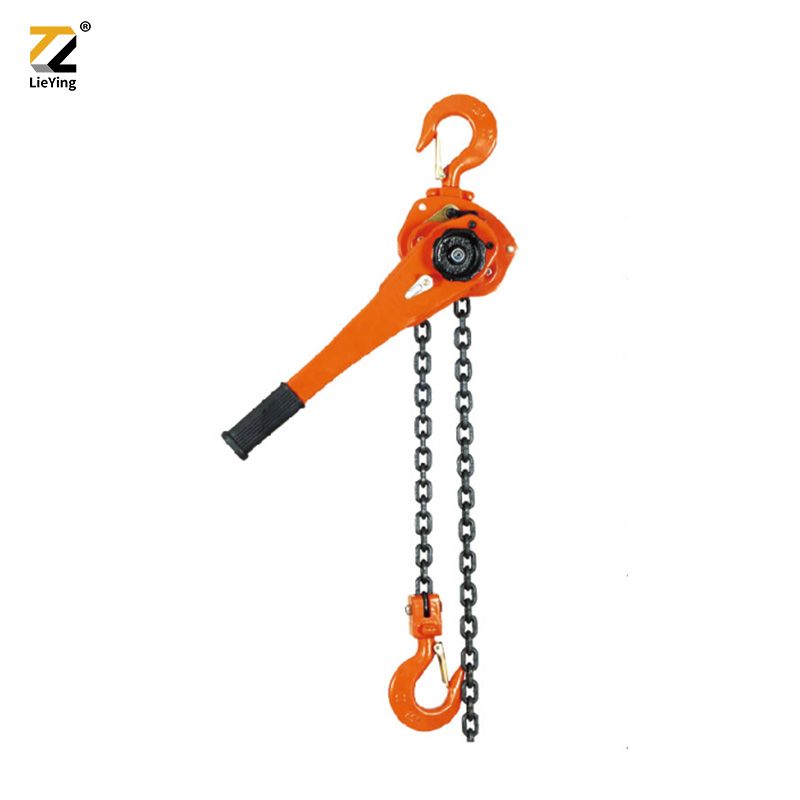Unleashing the Power of Lever Blocks: An Essential Tool for Heavy Lifting
In a world where heavy lifting is inherent to various industries, the use of lever blocks has revolutionized the lifting and maneuvering of heavy objects. Lever blocks, also known as lever hoists or come-alongs, are compact, versatile, and robust equipment that amplifies applied force to ease the burden of lifting. This article aims to highlight the importance of lever blocks, their numerous advantages, the characteristics of high-quality lever blocks, and the different types available in the market, backed by relevant statistics, examples, and authoritative sources.
I. The Importance of Lever Blocks
1. Enhanced Efficiency:
Lever blocks provide mechanical advantage, magnifying the applied force through leverage, ensuring that heavy loads can be lifted with minimal effort. This feature allows workers to achieve tasks that would otherwise be physically challenging, ensuring operational efficiency and reducing the risk of workplace accidents caused by excessive strain.
2. Versatility:
Lever blocks are designed to handle a wide range of lifting, pulling, and tensioning tasks across various industries, including manufacturing, construction, and transportation. These tools can be used in confined spaces, elevated areas, or even at awkward angles, making them indispensable in scenarios where other lifting solutions may be impractical or unavailable.
3. Cost-Effective:
Investing in lever blocks can result in substantial cost savings by reducing the need for specialized machinery, additional manpower, or more expensive lifting equipment. Moreover, lever blocks offer a long lifespan and require minimal maintenance, ensuring a cost-effective solution for businesses in need of heavy lifting capabilities.
II. Advantages of lever blocks
1. Portability:
Lever blocks are lightweight and compact, making them easy to transport and operate in different locations. Whether it's in a warehouse, construction site, or any other work environment, lever blocks provide maneuverability, allowing workers to accomplish tasks efficiently without the need for bulky equipment.
2. Precise Control:
The design of lever blocks allows for precise control over the load being lifted or lowered. Using a ratcheting mechanism, the operator can adjust the tension in small increments, enabling delicate positioning or secure holding of heavy loads, even in challenging circumstances.
3. Built-in Safety Features:
High-quality lever blocks are equipped with safety mechanisms that prevent the load from accidental slippage or release. These safety features, such as load limiters and automatic brakes, minimize the risk of accidents, protecting both the workers and the goods being lifted.
III. Characteristics of High-Quality Lever Blocks
1. Durable Construction:
A high-quality lever block should be manufactured using robust materials such as hardened alloy steel or aluminum, ensuring durability and resistance to wear and tear. This enhances its ability to withstand heavy loads and harsh working conditions, guaranteeing a longer lifespan.
2. Load Rating and Safety Certification:
Premium lever blocks are rigorously tested and certified by recognized safety institutions. Look for lever blocks that are clearly marked with their load ratings, indicating the maximum weight they can safely handle. Such certification ensures compliance with industry standards and reaffirms the reliability and safety of the equipment.
3. Ergonomic Design:
Lever blocks featuring ergonomic handles and grips provide greater comfort during operation. Additionally, lever blocks with anti-slip properties or anti-corrosive coatings further enhance the usability and longevity of the equipment, especially in challenging working environments.
IV. Types of Lever Blocks and Their Advantages:
1. Manual Lever Blocks:
These lever blocks are operated manually by the application of force on the handle, making them extremely easy to use and maintain. They are lightweight, portable, and suitable for a wide range of lifting applications. Manual lever blocks are an economical option for businesses seeking versatility and affordability.
2. Ratchet Lever Blocks:
Ratchet lever blocks offer precise load control and are commonly used in applications requiring delicate positioning of loads. They feature a ratcheting mechanism that ensures controlled lifting and lowering of heavy objects, even in confined spaces.
3. Electric Lever Blocks:
Electric lever blocks introduce automation by incorporating an electric motor. They are particularly useful for heavy lifting tasks that require repetitive or continuous operation. Electric levers blocks are known for their efficiency, reliability, and higher load capacity but are costlier than manual or ratchet lever blocks.
Conclusion:
The utilization of lever blocks has significantly transformed the way heavy lifting is approached across industries. Lever blocks provide numerous benefits, including enhanced efficiency, versatility, and cost-effectiveness while ensuring worker safety. When selecting a lever block, one must consider the characteristics of a high-quality lever block, such as durable construction, load rating, and ergonomic design. The three main types of lever blocks, namely manual, ratchet, and electric, cater to diverse application requirements. By leveraging the advantages of lever blocks, businesses can streamline their operations, reduce risks, and achieve efficient and safe heavy lifting tasks.
104
0
0
All Comments (0)
Previous: Key Questions to Ask When Choosing a High-Performance Solar Panel System
Next: The Backbone of Construction: Exploring Piledriving Machinery
If you are interested in sending in a Guest Blogger Submission,welcome to write for us!



Comments